#durum wheat manufacturer
Text
Tabletop Fantasy AU Bucci Gang AU (Part 3)
Author’s Note: This part’s about explaining more about The Kingdom of Passione, how outsiders view Passione, and how the country functions.

Passione actually has 5 economic classes:
Nobles = Old Money. Feudal lords with serfs who work the fields.
Guild masters = New Money. Runs the guilds. Typically, the wealthiest merchants in the country.
Guild members = The Middle Class. Merchants, manufacturers, and professionals.
Peasants = Freed serfs/slaves. Mostly farmers and servants. Unskilled labor. Living paycheck to paycheck.
Beggers = The poorest within cities. Barely scrapping by. Drug addicts, hookers, etc.
Combining the pic above with the 5 Econ classes:
Nobles = 5%
Guild Masters = 5%
Guild members = 40%
Peasants = 40%
Beggers = 10%
Passione's Politics
Passione is officially a Plutocracy, where 100 of the richest people rule. However, it’s actually a dictatorship. King Diavolo doesn’t give a fuck about their opinions and they know better than to argue against him.
So King Diavolo was initially loved by the people for for bringing so much prosperity to the cities, but after a while, crime got out of hand and the guards became too corrupt to stop it. Of course, crime never reaches the tourist areas. After all, the Kingdom's newfound wealth stems from tourism.
The rich know about Diavolo's dirty secret: He rose to power by using criminals and mercenaries to overthrown the previous king. He kept his end of the bargain and gave criminals free reign over the citizens. Yes, Passione has the lowest taxes in world, but that’s just for good optics. Thugs are allowed to shake down businesses and peasants for themselves, as long as Diavolo gets a 60-40 split.
Throughout the years, the newly formed middle class has been decreasing and the poor is getting poorer. Drugs are the biggest issue in Passione Cities. They're highly addictive, they ruin lives, they make criminals richer, and it sparks turf wars with very high casualties. This even affects the upper class due to rich kids becoming addicts and dying from overdose.
Why hasn't the people revolted?
1. Diavolo tricked most of the population to believe he has nothing to do with rise in crime in the cities.
2. Anyone who opposes him, rich or poor, young or old, will "mysteriously" be missing or found dead. Again, not traced back to Diavolo, so no one can prove his involvement.
How outsiders view Passione:
Meanwhile the tourists are like, "Oh! And they dont have public executions here! How civilized!" Tourists also like how Passione doesn't invade countries! In fact, Passione has an army of Orcs and they still have never invaded nations! He doesn’t need to. Diavolo sends out mercenaries to perform coup d'états throughout the continent in an attempt to install puppet leaders. Diavolo is well known for making "peaceful alliances"!
Rich people from other nations either love Passione or fear Passione with nothing in between. All of them have a strong opinion about the country. For half the rich, Passione is the best vacation spot in the world. For the rich people in-the-know, the Passione Noble and Guild Masters are extremely dangerous. Yes, most of the affluent are corrupt to some degree, but Passione takes it to a new level. It's one thing for the rich to fuck over the poor, but Passione's rich are willing to fuck over EVERYONE, even their own children.
Other Info
Passione's main exports are grapes, wine, olives, olive oil, and durum/pasta wheat Also, mercenaries and drug, shhh.
While the prejudice of the rich is race-based, the prejudice of everyday people is culture-based. Most people would accept a half-orc born and raise in Passione over an elf from another country.
#jojo's bizarre adventure#vento aureo#Tabletop AU#Fantasy AU#Diavolo#Vento Aureo AU#JJBA#Pathfinder#dungeons and dragons#Passione#Golden Wind
10 notes
·
View notes
Text
I turned out a variation on this one pot pasta for an easy makeshift supper, and it was really good!
We had half a small head of cabbage left in the fridge to use up, and around half a pound of the frozen kebab meat that seems very popular here. (And is super handy to keep.) Seemed like a good start. Since that wasn't as much cabbage as I would have liked, I also threw in a chopped up carrot and a big handful of frozen green beans to fill it out and also add some variety.
For the usual roughly half a pound (200-250g) of pasta to feed two of us--Barilla gluten free fusilli tonight--I added the usual 500-600mL of water along with the tomatoes. Or, just enough to make sure none of the pasta is poking ing up out of it, high and dry. It didn't look like this was calling for enough liquid, even accounting for some cooking out of the cabbage. Plus, a Knorr vegetable broth cube and some extra herbs/red pepper flakes/etc. since the kebab meat isn't as highly seasoned as sausage.
This recipe also calls for about half the cooking time under pressure that most types of pasta will want. Especially in a sauce with tomatoes. A pretty good rule of thumb, IME, is to start with half the usual stovetop cooking time plus another minute, then let it natural release for 5 minutes before opening the pot. If that's not enough time, it's easy enough to simmer a few more minutes with the lid off. Preferably let it sit for a few minutes before digging in!
(In the GF pasta department, IME Barilla or Garofalo work the best for the one pot approach. They behave very much like regular durum wheat pasta in general, and hold up great. No issues with their turning mushy or breaking all to hell if you so much as look at them wrong.
Not at all recommended, from experience: 100% rice or corn pastas, as much as I do like them for some other uses. Or whatever the hell supplier Sainsbury started using for their Free From store brand, unless that's changed again since we left the UK. I just stopped buying any of that except for the macaroni which probably came from a different manufacturer.)
1 note
·
View note
Text
North America Pasta Market Share, Size, Demand, Growth and Report 2024-2032
The latest report by IMARC Group, titled “North America Pasta Market: Industry Trends, Share, Size, Growth, Opportunity, and Forecast 2024-2032“, offers a comprehensive analysis of the industry, which comprises insights into the North America pasta market report. The report also includes competitor and regional analysis, and contemporary advancements in the market.
The North America pasta market size reached US$ 6.2 Billion in 2023. Looking forward, IMARC Group expects the market to reach US$ 8.9 Billion by 2032, exhibiting a growth rate��(CAGR) of 4% during 2024-2032.

North America Pasta Market Overview:
Pasta is a staple food enjoyed globally, originating from Italy. Typically made from durum wheat semolina or alternative grains, pasta comes in various shapes and sizes, ranging from spaghetti and penne to fusilli and lasagna. The dough is typically mixed with water or eggs, kneaded, and then shaped before being cooked by boiling or baking.
This versatile dish serves as a foundation for countless recipes, paired with a variety of sauces, proteins, and vegetables. Whether enjoyed in traditional Italian dishes or adapted into international cuisines, pasta's simplicity and adaptability make it a beloved and comforting culinary choice, providing a satisfying and versatile base for diverse culinary creations.
Request Free Sample Report: https://www.imarcgroup.com/north-america-pasta-market/requestsample
North America Pasta Market Trends:
The market in North America is majorly driven by the increasing demand for convenient and time-efficient meal options. Busy lifestyles and a focus on convenient cooking contribute to the market's expansion. Moreover, the rising adoption of diverse and international cuisines in North America has driven the demand for a wide variety of pasta types, shapes, and flavors. Consumers are increasingly exploring and embracing different pasta varieties beyond traditional options, contributing to market diversity. Furthermore, health consciousness is another key driver, with the availability of healthier pasta alternatives, such as whole wheat and gluten-free options. As consumers prioritize nutritional choices, the market responds by offering pasta products that cater to specific dietary needs and preferences.
Besides, rapid innovations in pasta products also plays a crucial role in market growth. Manufacturers continually introduce new and unique pasta formulations, including fortified and organic options, appealing to consumers seeking premium and health-oriented choices. Retail presence and accessibility contribute significantly to market expansion. The widespread availability of pasta products in supermarkets, grocery stores, and online platforms ensures easy access for consumers, driving overall market growth. Additionally, the enduring popularity of pasta as a versatile and cost-effective staple in various recipes, from classic Italian dishes to fusion cuisine, maintains its market relevance. Its adaptability to various culinary styles and the ability to serve as a canvas for diverse flavors contribute to its enduring appeal in North America.
Explore the Full Report with Charts, Table of Contents, and List of Figures: https://www.imarcgroup.com/north-america-pasta-market
Key Market Segmentation:
Key Regions Analysed:
United States
Canada
Market by Type:
Dried Pasta
Chilled/Fresh Pasta
Canned/Preserved Pasta
Others
Market by Raw Material:
Durum Wheat Semolina
Wheat
Mix
Barley
Rice
Maize
Others
Market by Distribution Channel:
Supermarkets
Hypermarkets
Discount Stores
Independent Small Grocers
Online Stores
Others
Competitive Landscape:
The competitive landscape of the industry has also been examined along with the profiles of the key players.
Key highlights of the Report:
Market Performance (2018-2023)
Market Outlook (2024-2032)
COVID-19 Impact on the Market
Porter’s Five Forces Analysis
Strategic Recommendations
Historical, Current and Future Market Trends
Market Drivers and Success Factors
SWOT Analysis
Structure of the Market
Value Chain Analysis
Comprehensive Mapping of the Competitive Landscape
Note: If you need specific information that is not currently within the scope of the report, we can provide it to you as a part of the customization.
About Us:
IMARC Group is a leading market research company that offers management strategy and market research worldwide. We partner with clients in all sectors and regions to identify their highest-value opportunities, address their most critical challenges, and transform their businesses.
IMARC’s information products include major market, scientific, economic and technological developments for business leaders in pharmaceutical, industrial, and high technology organizations. Market forecasts and industry analysis for biotechnology, advanced materials, pharmaceuticals, food and beverage, travel and tourism, nanotechnology and novel processing methods are at the top of the company’s expertise.
Contact US:
IMARC Group
134 N 4th St. Brooklyn, NY 11249, USA
Email: [email protected]
Tel No:(D) +91 120 433 0800
United States: +1-631-791-1145 | United Kingdom: +44-753-713-2163
0 notes
Text
Worldbuilding | Resources
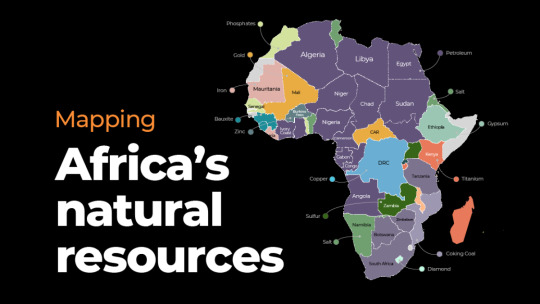
via Al Jazeera
Nearly half the world’s gold and one-third of all minerals reside in Africa, and much of North Africa itself is mineral rich. The Western Sahara is a major phosphate producer. The region also has deposits of other minerals including iron ore, silver, zinc, copper, lead, manganese, barytine, gold, salt, limestone, gypsum, and coal (in Morocco). In addition to this, rubber, timber, and diamond were highly sought after commodities as well.
These resources did not merely serve the Europeans however, as precolonial mining and metallurgy were essential social, technological, and even politico-economic pillars of African communities of varying time periods. At a general level, metallurgy and mining were immersed in sociocultural beliefs and assumed to be under the control of supernatural powers. For example, the belief in supernatural powers motivated ancient Egyptians to construct a temple precinct adjacent to the copper mines in the Arabah Desert. Owing to their cultural and geographical location, Egypt, the Sudan, North Africa, and the Horn of Africa shared broad similarities in their metallurgical histories (for example, the practice of soldering with lead). This sharply differed in some cases from that of many regions such as the West, Central, East and Southern Africa.
Agriculture was by far the single most important economic activity in Africa. Africa produces all the principal grains—corn, wheat, and rice—in that order of importance. Corn has the widest distribution, being grown in virtually all ecological zones. Wheat is the preferred crop while barley is secondary and grown on more marginal land. Other field crops in Northwest Africa include fava beans, sugar beets, rapeseed, sunflower seed, and chickpeas. Olives, which were an important traditional crop, were grown in groves in the drier regions. About one quarter of Morocco’s wheat was durum, 40 to 50 percent for Algeria, and 80 percent for Tunisia. Fodder crops were not widely grown, however they existed in subtropical areas of North Africa (broad beans, vetches, velvet beans, cowpeas, soybeans, and lablab). Potatoes were also cultivated in Mediterranean regions of North Africa, but sweet potatoes had a more tropical and subtropical distribution.
Among the important fruits were bananas, pineapples, dates, figs, olives, and citrus; the principal vegetables included tomatoes and onions. The date palm in particular was most frequently cultivated in the North African region. So too were the fig and olive, being limited to North Africa. Orange was also produced in the Mediterranean areas of the continent. Tomatoes and onions were grown widely, but the largest-producing areas bordered the Mediterranean. Large vegetables, such as cabbages and cauliflowers, were grown in the same region, from where some quantities were exported to Southern Europe. Large areas of Africa raised cotton for textile manufacture as well, which extended to North Africa.
Cattle, sheep, and goats formed the bulk of livestock raised. Most of these animals were raised essentially for meat, but sheep in the north and were also kept for their wool. In the early 20th century, production of milk and milk products was grossly insufficient to meet domestic needs. Fishing was important on the local level in all countries bordering the sea or inland bodies of water. Cod, hake, haddock, tuna, bonitas, and bullfish were particularly common in Northern waters. Tilapia and other cichlids constituted the largest catch in inland waters.
In North African cuisine, the most common staple foods were meat, seafood, goat, lamb, beef, dates, almonds, olives, various vegetables and fruit. Because the region is predominantly Muslim, halal meats were usually eaten.
Despite these advantages, and they were capitalised upon as well, during the 20th century the main motivations for colonisation were the rapid industrialisation and economic conditions of Europe and the need to expand their landmass. In addition to this, there was a colonial desire to expand political and religious ideas in Africa as well.
0 notes
Text
Nutrient-Rich Goodness: Cooking With Kamut Khorasan Wheat Flour
Kamut Khorasan wheat flour is a versatile and nutritious option for baking. you can use it to make wholesome bread. Protein plays a central role in maintaining strong tissue and aids in oxygen transport and immune function, while fiber helps lower your cholesterol, fights type 2 diabetes and maintains digestive health. It is an amazing variety of ancient wheat. Unlike hard red or hard white hybrid wheat, Khorasan wheat has lower gluten, is higher in protein, contains higher amounts of trace vitamins and minerals, and is lower in fat than many other grains, including oats.
Why is Kamut Healthy Eats?
One cup of cooked kamut contains 251 calories, 2 grams of fat, 52 grams of carbohydrates, and 11 grams of protein. It’s packed with energy-boosting boosting vitamins including thiamin and niacin.
Although kamut is related to wheat, most folks with gluten allergies can tolerate it. If you’re turning to kamut as a wheat alternative, talk to your doctor or registered dietitian about how to go about introducing it into your diet, and be sure to read the labels as some manufacturers do slip gluten in.
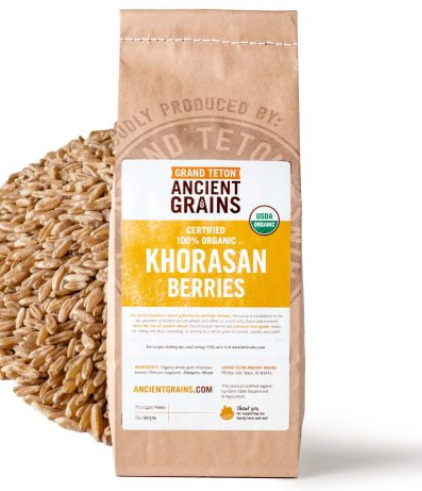
What is Kamut flour good for using?
I have found KAMUT flour to be great for bread, including flatbread and wheat bread. I have also found it to be great for cookies, salads, and so much more.
I primarily use Kamut flour for bread and our favorite easy flatbread. I have recently been working hard to create some recipes that hopefully I will be able to tolerate in the future. While I have tried the recipes I have created, I have held back because of my intolerance, but I do know that I did not react to the small amount I ingested and that the bread and cookies tasted amazing! I wish I could have eaten them all.
Is Kamut flour healthier than wheat flour?
Since Khorasan wheat is a type of wheat it still has gluten and those with an intolerance or allergy should avoid it if it worsens their symptoms. However, it is easier to digest than modern
Kamut has become a favorite of bodybuilders and vegans alike because of the high protein content in this wheat, and the fact that it contains 8 essential amino acids, making it an almost-complete protein.
Conclusion: An ancient landrace wheat gathered by primitive farmers, Khorasan is considered to be the ancestor of modern Durum wheat, and offers us a rich nutty flavor and a kernel twice the size of modern wheat. Khorasan is also a great source of many vitamins and minerals, especially thiamin and pantothenic acid. kamut khorasan wheat is very healthy for our health. Half a cup of Khorasan provides half of our needed thiamin for the day. Free Delivery is available on a 48lb package to all 50 US states. PO Boxes do not qualify for free delivery. Order Now at Grand Teton Ancient Grain!
0 notes
Text

Wheat Manufacturers and Exporters in India
ABZ Frozen Foods is one of the top Wheat Manufacturers, Suppliers and Exporters in India. We have widest range of Grain Specially Wheat like Milling Wheat, Lokwan Wheat, Sharbati Wheat, Durum Wheat, Australian Wheat and Many More. @ 91-9654773492/ +91-7827136846 or visit https://abzfrozenfoods.com/wheat-products.html
#RefinedFlourExporterIndia#RefinedFlourExporter#MaidaExporter#MaidaExporterIndia#wheatFlourExporter#WheatExporter#wheatFlourExporterIndia#WheatExporterIndia
0 notes
Text
Authentic Italian Penne Rigate
Gustora Foods brings you the finest, authentic Italian Penne Rigate that will take your pasta dishes to a whole new level of culinary delight. Crafted with passion and precision, our penne rigate showcases the unmistakable quality and taste that has made Gustora Foods the biggest manufacturers of pasta.
The secret to our penne rigate lies in the selection of durum wheat semolina and the traditional bronze extrusion method. This gives our pasta its unique rough texture, allowing it to hold sauces exceptionally well and ensuring every bite is packed with flavor. Choose Gustora Foods' Penne Rigate for an authentic Italian pasta experience
0 notes
Text
Nourishing with Nature: Exploring the Global Organic Pasta Market's Wholesome Goodness, Sustainable Practices, and Delectable Pasta Creations
The organic pasta market has experienced notable growth in recent years, fueled by increasing consumer awareness about the health and environmental benefits of organic food. Organic pasta is made from organically grown durum wheat or alternative grains, and it is produced without the use of synthetic pesticides, fertilizers, or genetically modified organisms (GMOs). As more individuals prioritize sustainable and healthy eating habits, the demand for organic pasta has soared. The market offers a wide range of organic pasta varieties, including spaghetti, penne, fusilli, and linguine, providing consumers with diverse options for their pasta dishes.
One of the key drivers behind the growth of the organic pasta market is the rising demand for chemical-free and environmentally friendly food options. Consumers are increasingly concerned about the potential health risks associated with pesticide residues in conventionally grown crops. Organic pasta provides a safer and more natural alternative, reassuring consumers about the quality and purity of the ingredients used. Additionally, organic farming practices promote soil fertility, biodiversity, and water conservation, aligning with the growing preference for sustainable and eco-conscious food choices.
For More Info @ https://www.persistencemarketresearch.com/market-research/organic-pasta-market.asp
The market for organic pasta is characterized by both established brands and emerging players, all aiming to cater to the rising demand. Manufacturers often highlight the organic certifications and the transparency of their sourcing and production processes to gain consumer trust. Furthermore, many organic pasta brands emphasize the use of whole grains, ancient grains, or gluten-free alternatives to cater to specific dietary preferences. Marketing efforts also focus on promoting the superior taste and texture of organic pasta, debunking the notion that organic food sacrifices flavor. With the increasing adoption of organic lifestyles and the growing availability of organic products in supermarkets and online platforms, the organic pasta market is expected to continue its growth trajectory in the coming years.
0 notes
Text
Worldwide Sales Of Pasta Are Anticipated To Advance At A CAGR Of 6.5% by 2033.
The global pasta market is valued at US$ 49.7 billion in 2023 and is predicted to expand at a CAGR of 6.5% from 2023 to 2033. As such, global demand for pasta is forecasted to reach a market valuation of US$ 93.3 billion by the end of 2033.
Fact.MR, in its latest business intelligence study, depicts the nuts and bolts of the global Pasta market. The report presents detailed information regarding the drivers, restraints, opportunities and trends affecting market growth.
Each segment along with its sub-segment is analyzed in terms of value and volume. Further, the report elaborates the market behavior of each vendor operating in the Pasta market.
Download Sample Copy of This Report:
Key findings of the Pasta market study:
Regional breakdown of the Pasta market based on predefined taxonomy.
Innovative manufacturing processes implemented by Pasta vendors in detail.
Region-wise and country-wise fragmentation of the Pasta market to grasp the revenue, and growth outlook in these areas.
Changing preferences among consumers across various regions and countries.
Factors (Positive and Negative) impacting the growth of the global Pasta market.
Competitive Landscape:
Key manufacturers of pasta are making huge investments in strengthening their supply chain management systems and providing a wide variety of quality products to target end users. In the production of pasta, manufacturers follow certain guidelines, which are implemented by respective governing bodies to ensure minimal environmental impacts and quality control.
New developments, innovations, etc., are some strategies, which are adopted by key players to attract consumers to the target market.
For instance,
In March 2021, Bernoi, a United States company, announced the launch of frozen food products in different shapes, including macaroni, fusilli, penne, and others. The company aims to offer restaurant-style products for consumption at home.
In September 2020, AGT Food and Ingredients launched Veggipasta, which is a pea-based product. This initiative of the company provides healthy food alternatives to its consumers.
Key players in the pasta market are Ebro Foods, S.A., TreeHouse Foods, Inc., Unilever, The Kraft Heinz Company, Nestle, Armanino Foods of Distinction, General Mills Inc., and Del Monte Foods Inc.
Segmentation of Pasta Industry Research:
By Type :
Dry
Instant
Fresh
By Raw Material :
Semolina
Durum Wheat
Refined Flour
Others
By Sauce :
White
Red
Mix
By Distribution Channel :
Supermarkets/Hypermarkets
Online Stores
Convenience Stores
Others
By Region :
North America
Europe
Asia Pacific
Latin America
Middle East & Africa
Contact:
US Sales Office
11140 Rockville Pike
Suite 400
Rockville, MD 20852
United States
Tel: +1 (628) 251-1583
E-Mail: [email protected]
0 notes
Text
Which type of wheat is good for your health?
The question is usually asked in the realm of flour, since that’s when we most often see the terminology. We know all about how manufactures mill flour, about enriched flour and even bleached flour, but we haven’t talked about the grains themselves yet. Odd, since that’s where the answer to our question really lies.
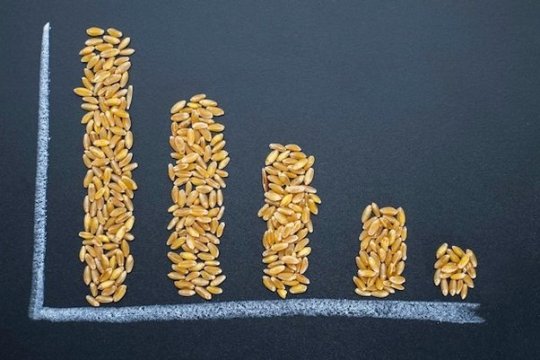
DIFFERENT TYPES OF WHEAT
First, wheat is primarily classified according to its growing season.
Winter Wheat – planted in the fall, harvested in the spring, comprises approximately 75% of wheat grown in the U.S.
Spring Wheat – planted in the spring, harvested in late summer or early fall.
Beyond the growing season, wheat is further categorized according to its hardness (hard/soft), color (red/white) and shape of its kernel. In the end, we’re left with the following six types of wheat:
Hard Red Winter
Hard Red Spring
Soft Red Winter
Durum
Hard White Wheat
Soft White Wheat
THE DIFFERENT PURPOSES OF DIFFERENT TYPES OF WHEAT
The protein content of the wheat is what primarily determines what the wheat will be used for and the greater the protein, the greater the elasticity of the dough will be.
Hard red winter and hard red spring contain the highest percentages of protein are most often used in goods requiring size, like breads and rolls.
Hard white and soft white contain the lowest percentages of protein and best suited for baked goods like cakes, cookies, crackers, pastries and muffins.
The color of the wheat plays a part too and as you may have already guessed, red wheat is darker than white wheat. Red wheat also has a stronger, more bitter flavor than white. This isn’t a big deal for many of us home bakers, but it is a big deal when you’re a big manufacturer trying to create a product that’s visually appealing to your consumer.
Soft red winter is often used in blatantly obvious brown crackers and flat breads. These are often marketed as “whole grain” crackers and such.
Soft white is used in goods when manufactures want the item to look and taste “white,” but be able to claim as healthy with wheat. One example of this are muffins “made with white wheat.”
BLENDING DIFFERENT TYPES OF WHEAT FOR DIFFERENT FLOURS
Generally speaking, the nutritional profiles of the grains do not differ much beyond the protein. Essentially, you could swap one wheat for another and the nutrition (except the protein) would remain fairly consistent. That’s why you’ll find many people using white wheat for bread at home when they’re trying to wean their families away from processed white flour.
But the only time you’re getting 100% whole wheat is when the label literally says “100% whole wheat” or “100% white whole wheat,” in which case the only difference is the color, harvesting season and protein content.
Did you know that 100% whole wheat can only be claimed if the resulting flour contains all three portions of the grain (bran, germ, endosperm) in same proportion as they are found in the original grain?
There are many other flours that aren’t 100% whole wheat though. So then, what are they made of?
All-Purpose Flour. 80% hard red wheat, 20% soft red wheat. Remember that this is made only from the endosperm, which has very little (if any) nutrients and very little color, since the germ and bran are naturally darker. Remember that all-purpose flour tends to be bleached and enriched.
Bread Flour. Most varieties are made from hard red spring wheat, since it contains the highest level of protein and bread flour is ideal for bread. This is also milled only from the endosperm, so there is little, if any, nutrition. Bread flour also tends to be bleached and enriched.
Cake Flour. Usually derived from soft white wheat, but again only from the endosperm.
Pastry Flour. With a slightly higher percentage of protein than cake flour, this is likely derived from the endosperm of hard white wheat.
Self-Rising Flour. A combination of all-purpose flour, baking powder and salt. Not recommended, since the all-purpose flour is likely bleached and there’s no control over the quantity of baking powder and salt in the mixture (which makes using it in a recipe that calls for both ingredients nearly impossible). Plus the baking powder can become ineffective in humid climates.
Stone-Ground Whole Wheat Flour. Made the old fashioned way with stones grinding the wheat berries instead of steel mills. Bread connoisseurs claim stone-ground flour retains more nutrients than steel milled because the heat generated from the steel mills can harm some of the nutrients.
U.S. Wheat Associates (USW) actively seeks to bring down trade barriers or change policies that may prevent an overseas customer from choosing U.S. wheat. In most cases, these barriers violate a country’s commitments under the World Trade Organization (WTO) or a free trade agreement (FTA).
Every year, USW submits a report to the U.S. Trade Representative detailing these barriers. View the full report here.
The sections below discuss several categories related to trade barriers and provide specific trade barrier examples alphabetically by country.
To learn more about US Wheat market visit:
Trade Barriers - U.S. Wheat Associates
0 notes
Text
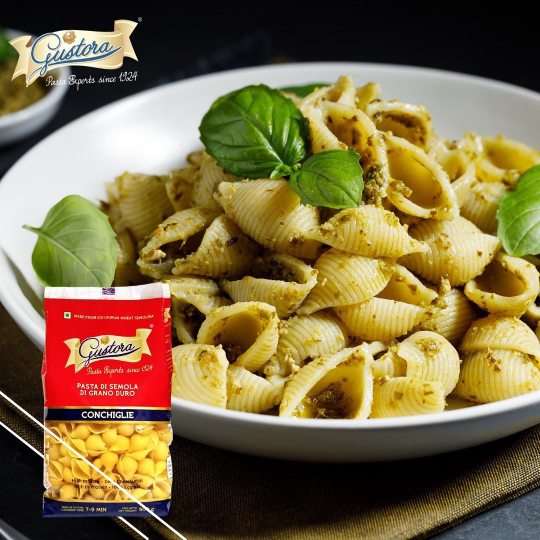
Gustora Foods - Top Pasta Manufacturing Brand in India
Pasta Experts since 1924. Durum Wheat Semolina pasta - rich in fibre, protein, no maida. Shop Penne, Fusilli, Spaghetti and more from the top Pasta Manufacturer in India.
0 notes
Text
Gluten-Free Couscous Substitutes: Have You Tried Them?

An element in salads and soups with grains as the base as well as a base for stews, couscous is a meal made of microscopic pasta spheres. So are they gluten-free? The answer is NO.
Even though it is extremely delicious, these spaghetti balls contain gluten. Today in this article, we will explain what couscous is, how to make it, and give you some substitutes you can use to make anything from salads and soups to full-course meals.
Is couscous gluten-free?
We have already answered this, but we need to keep reminding ourselves that couscous contains gluten. Almost all commercially produced pasta, including couscous, is derived mostly from durum semolina. Hard durum wheat is used to make the high-gluten flour known as semolina.
Durum has a staggering 27% extractable wet gluten, or around 3% more than regular wheat.
Durum wheat is not recommended for those who suffer from gluten-related conditions such as celiac disease, non-celiac gluten sensitivity, and wheat allergies because it contains high gluten concentration. Traditional couscous is not gluten-free, no matter if they resemble rice or other gluten-free grains. It is made from semolina, a durum wheat particle.
There is gluten free couscous mentioned in several restaurant menus, which may cause a lot of confusion among people.
If you are allergic to gluten or have celiac disease, be aware of this and enquire about any claims made by eateries that their couscous is gluten-free. It can be even more confusing because some restaurants and eateries will market alternatives to couscous, with a similar taste and texture, as couscous itself.
Be cautious
When placing an order for something gluten-free, always be cautious. To confirm that something, which was naturally gluten-free hasn't been rendered no longer being so, check the label or ask the eatery.
Cross-contamination doesn't occur at products' manufacturing facilities, but it might still occur during your meal being prepared in a restaurant. It's crucial to check your rice meal for gluten if you have celiac disease or any serious gluten sensitivity. Instead, search for gluten-free alternatives.
Is Israeli couscous gluten-free?
Israeli couscous is not a gluten-free food, much like Moroccan couscous is.
Many people are curious as to what makes Israeli couscous different from conventional couscous (especially those who have never had it before).
Israeli couscous is larger and more uniform in shape than conventional couscous, even though both are produced using water and semolina flour. The texture of the Israeli variant is also softer and chewier.
Israeli couscous is sometimes known as pearl couscous because of its size. Couscous, a dish consisting of small pasta spheres, is a component in salads and soups with grains as the substrate and a base for stews.
What are the gluten-free alternatives to couscous?
Here is a list of gluten free couscous alternatives:
Quinoa
Although quinoa is technically a seed rather than a grain, it contains a complete protein!
Although it's a little bit smaller than couscous, it has a comparable texture and flavor, making it an acceptable substitute.
Due to Quinoa's widespread availability, this alternative is also quite handy.
Fonio
Delicious and naturally gluten-free, fonio is a high-protein grain.
We wholeheartedly suggest it if you haven't already! It has an outstanding nutritional profile and is a little bit nutty.
Brown rice
Another excellent alternative to couscous is brown rice. For it to resemble couscous in texture, you will need to break it up and crush it a little.
The other option is to choose short-grain brown rice, which will give you a higher chance of obtaining the desired couscous replacement without the need to prepare the rice.
Once more, Spice Zen is a great gluten-free rice option. There is a wonderful selection of different kinds of rice at Spice Zen. They are all delicious and gluten-free.
#gluten free couscous#gluten sensitivity#no gluten#white rice couscous#couscous#brown rice couscous#spicezen
0 notes
Photo
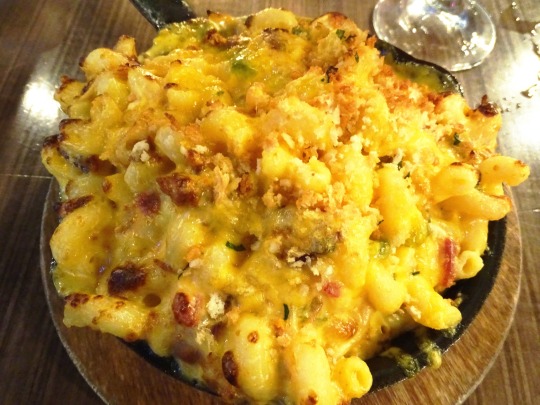

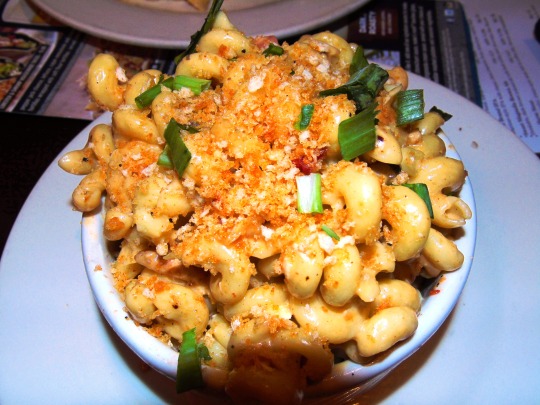
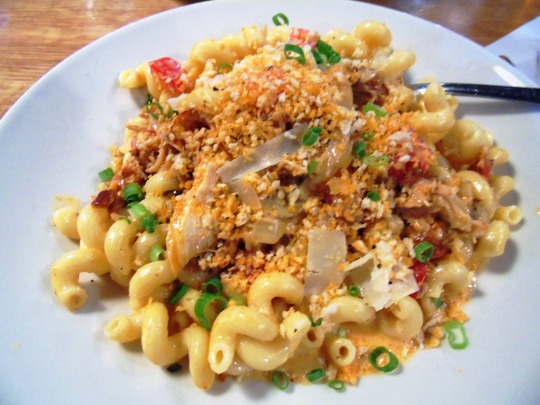

National Macaroni Day
Each year, the nation gets its fix of the beloved pasta, macaroni, as we celebrate National Macaroni Day on July 7. This little elbow-shaped pasta is such a fan-favorite that it gets its own day of celebration. As it should! Apparently, macaroni is the most common form of pasta in the U.S. So on this day, let’s all come together to show our love for the humble and versatile macaroni.
History of National Macaroni Day
The origins of pasta, and macaroni, are not very clear. Records indicate pasta might have originated in China, instead of in Italy as is commonly believed.
The word ‘macaroni’ itself has had varied meanings to different people over time. The International Pasta Organisation traced the word to the Greeks who had established the colony of Neopolis (modern-day Naples). They had appropriated a local dish made from barley-flour pasta and water called ‘makaria.’ Cookbooks in the 14th or 15th century contained the initial mentions of macaroni-like dishes and how to make them, but these noodles were much longer than the short elbow macaroni we now use. Recipes in later centuries catered to the tastes and palettes of the regions they came from, and all were slightly different variations of the macaroni we know today.
As more of the world came into contact with various cultures, different types of pasta were introduced to the colonies. People began to fall in love with this doughy noodle. The American Ambassador to France, Thomas Jefferson, first tasted pasta in Naples, Italy. He even brought back a pasta-making machine to the U.S., and this inspired him to design a machine of his own, one with instructions for making pasta. The American love affair with pasta continued to boom throughout the 19th century.
National Macaroni Day timeline
2000 B.C.–10000 B.C.The Greeks Establish a Colony
The Greeks establish a colony in Naples and appropriate a local dish called ‘makaria,’ which might have been the inspiration for the word 'macaroni'.
5000 B.C.Pasta is Born (Maybe)
Some food historians believe pasta originated in this period, in China.
1465First Published Record of Pasta and Cheese
Author and epicure Maestro Martino publishes a landmark cookbook, “Libro de Arte Coquinaria,” which contains several pasta dishes, some paired with cheese.
1789Thomas Jefferson and His Pasta Maker
Thomas Jefferson brings a 'macaroni' maker to the U.S. after he visits Europe as the ambassador to France.
1872Macaroni as We Know It
Author and food historian Paul Imhof believes the world's first commercial production of macaroni as we know it today — short, hollow, and elbow-shaped — was not in Italy but in Switzerland.
1904A Society is Born
The predecessor to today's National Pasta Association — the National Association of Macaroni and Noodle Manufacturers of America — is formed.
National Macaroni Day FAQs
Is macaroni good for health?
The pasta is made from durum wheat, which is a good source of energy and carbs and even has small amounts of fiber. However, the presence of nutrients depends on the manufacturing process of the brand of pasta you choose.
What is the difference between pasta and macaroni?
The only thing differentiating all pasta from macaroni specifically is the shape. Macaroni has a distinctive tube-like shape and is bent like an elbow. Otherwise, even the dough to make pasta is traditionally the same.
Is there a Mac and Cheese Day?
Yes, National Mac and Cheese Day is celebrated on July 14 each year.
How To Celebrate National Macaroni Day
Experiment in the kitchen
Experiment outside the kitchen
Organize a macaroni cook-off
This versatile ingredient can be used in everything from soups and casseroles to hot dishes and salads. So why not go wild experimenting with different ways to play with macaroni recipes. You can make a macaroni-crusted lasagna, a macaroni pizza with the base being baked mac and cheese, or even macaroni and cream dessert. Whether you are a vegetarian or a meat-lover, there is a fun macaroni recipe for everyone to try out.
Macaroni is not just for eating. There are ways to play with it too! For those with kids (or those who are kids at heart), make fun new art and craft projects with macaroni. You can dye the pasta in different colors and string them into jewelry or glue them onto boxes for a DIY decoration project. Let the kids go wild creating their own fabulous works of art!
Challenge friends and family to a friendly macaroni-themed cook-off. The best macaroni dish wins. You can take this one step further and create categories for the most inventive recipes.
5 Fun Facts About Macaroni
Macaroni for breakfast
Macaroni is perfect for cheese
Macaroni as an insult
The macaroni penguin
City rats love macaroni and cheese
This pasta is traditionally eaten for breakfast in Hong Kong and is cooked with mushrooms, peas, ham, eggs, and chicken stock.
Purists swear by macaroni (and shell pasta) as the best pasta to pair with cheese because it has a bigger surface area for the cheese to hold on to compared to long pasta.
In the 1700s, fashionable men who wore expensive Italian clothes were called 'macaronies,' which is another word for 'dandies'.
The distinctive yellow feathered crest on the macaroni penguin’s head that resembles the hats worn by fashionable men from the 1700s inspired this bird's name.
A study by the Animal Behavior Society showed city-dwelling rats prefer macaroni and cheese above anything else.
Why We Love National Macaroni Day
It is a taste of childhood
It makes mealtimes easier
It is oh so delicious
This humble pasta has played a major role in our lives, appearing as comfort food, warming meals when we were sick, and as our kindergarten art. All pasta is mouthwatering, but there is something special about this elbow-shaped one that takes us straight back to our childhood and those fond memories.
Making store-bought macaroni (and other pasta) is extremely easy. Many macaroni-based dishes can be cooked ahead and stored, making mealtimes much less stressful. Macaroni can also be used to stretch the quantity of food to feed more people.
This pasta goes with a lot of different cuisines and ingredients with absolutely no problem and makes it taste even better. On its own, macaroni looks unassuming, but the right flavors turn a simple dish into a powerhouse. We love how this pasta makes us feel like master chefs with very little effort.
Source
#National Macaroni Day#NationalMacaroniDay#7 July#Hörnli#Pasta#travel#Mac 'n' Cheese#food#restaurant#tourism#vacation#original photography#Bacon Mac 'n' Cheese#entrée#side dish
0 notes
Photo

It's important to know what a wheat grain looks like, because when buying pasta and flour you can decide whether the product you hold is good quality or not. As you can see, a whole grain is quite high in protein. The figures given in this graphic is quite conservative in proteins amount, but depending on the plant, good wholegrain flour can go from 13% to 22% protein content. Durum wheat semolina flour is especially rich in protein, scoring the 22%. A part the macronutrients, the bran and germ are particularly rich in vitamins of the b group, iron, and essential fatty acids ( specifically the germ). The bad news is that you can hardly find wholegrain pasta, flour, and bread out there. The high content of fat in the germ makes it an undesirable by manufacturers, as it lower the shelf life of flour and pasta. When you buy wholemeal, or wholewheat, you are not exactly buying what you hope: you are buying flour obtained from the endosperm, to which the bran has been added back. This is standard practice, which open the can of warm of shortcuts and bad quality products that riddles the food industry. (at London, United Kingdom) https://www.instagram.com/p/CdqVMPfO7LX/?igshid=NGJjMDIxMWI=
0 notes
Text
What are the Benefits of Eating Durum Wheat?
Durum wheat is one of the hardest of all types of wheat. By hard, it means, it contains a lot of amount of resistant starch. The word ‘Durum’ itself is derived from a Latin word that means ‘hard’.
Durum kernels are amber-colored and larger than those other wheat classes. Durum wheat is milled further into a product called ‘Semolina’, majorly used for pasta and bread.
Durum wheat has many benefits. Adding Durum wheat to your diet can help you with a well-balanced diet and multiple health benefits.
Some of the key benefits of Durum wheat are listed below >>>

Key Benefits of Durum Wheat
1. Prevents Heart Problems
Durum wheat is very good for improving heart problems as it is rich in potassium & low in sodium. Potassium is very good for heart health. It helps the heart to beat at a customary rhythm by lowering blood pressure. It also works as a balance keeper between the body cells and body fluid.
2. Good Source of Balanced Diet
Durum wheat is rich in many important nutrients including fiber & carbohydrates. Other than these, it also contains iron, folate, magnesium, vitamin-B complex, vitamin E, and nil in fat.
3. Helps in Weight Loss
Durum wheat products are easy to digest. Durum is rich in protein, and increasing protein in your diet facilitates weight loss. Adding Durum to your diet may additionally facilitate cut back hunger, preserve muscle mass throughout weight loss, increase fat loss, and improve body composition.
4. Keeps Digestive System Healthy
Durum is rich in dietary fiber which plays an important role in digestive health. Dietary fiber helps in stimulating the expansion of friendly gut bacteria. Further, a healthy gut bacterium is good for healthy digestion, metabolism, and good health. And the soluble fiber of durum wheat flour facilitates slow digestion.
5. Good for Kidney Health
The balanced amount of potassium & sodium in Durum are the major factors in preventing kidney-related diseases.
6. Effective in Blood Sugar Control
Durum is proved to be very good in preventing Type-2 Diabetes. If you are a diabetic patient, then you can choose Durum as your first priority in wheat due to its low glycemic index. Also, magnesium and dietary fiber are very good for blood sugar control.
7. Boost Immune System
Rich in protein, Durum is one of the best wheat for boosting immune health. Protein is a primary component of antibodies, which helps in fighting harmful microorganisms in the body. Also, Durum is rich in B-complex vitamins, particularly folate and thiamine which support our metabolism and energy production.
Golden Bansi – Leading Durum Wheat Semolina Manufacturer and Supplier in India
Durum wheat is one of the most popular varieties of wheat in terms of consumption and cultivation after common wheat. Golden Bansi is one the best Durum Wheat Semolina Manufacturers & Suppliers in India. It is an Indore, Madhya Pradesh based Food Manufactured Company delivering its Durum Wheat products all over India since 1991.
Golden Bansi is one of the pioneers in supplying Indian Grade 1 Quality Durum Wheat.
Golden Bansi’s Durum Wheat products are manufactured and produced by Shree Kailash Grain Mills Private Limited.
The premium agri-products of Golden Bansi include:
· Bansi Durum Wheat
· Durum Wheat flour
· Rava Kesari
· Corn and Corn Flour
· Soya & Soya Products
· Chickpeas and Cereals.
Connect to Golden Bansi Durum Wheat Products >>>> www.goldenbansi.com
Hope this article justified your purpose!!
Thank you!!
#durum wheat#durum wheat semolina#durum wheat manufacturer#durumwheatbenefits#semolina#goldenbansi#durumwheatproduct#durumwheatindia#durumwheathealthbenefits#durumwheatsupplier#kesarirava#daliya#upma#brokenwheat#sooji#pasta
0 notes
Photo
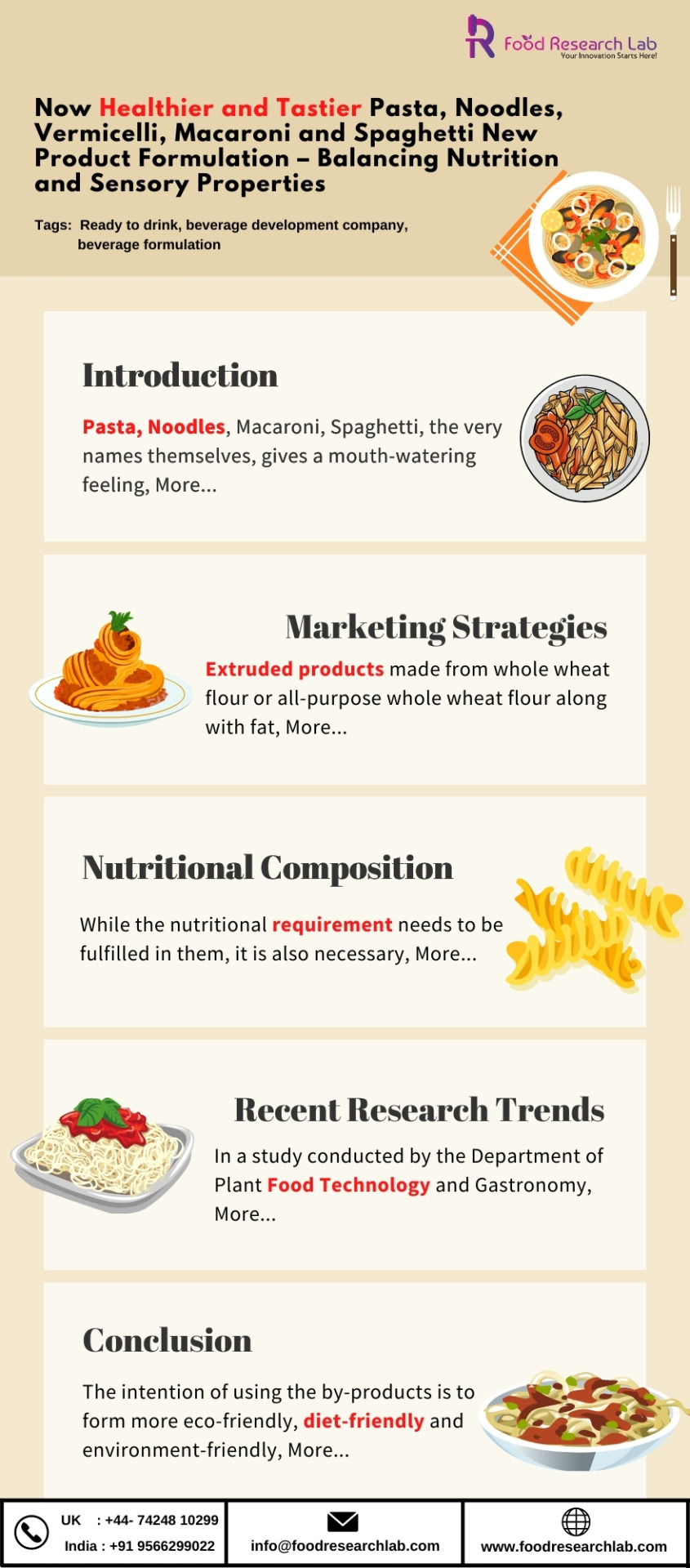
Pasta, Noodles, Macaroni, Spaghetti, the very names themselves, gives a mouth-watering feeling. It reminds one of all the tasty sauces and spices like oregano and rosemary, and cheese that go into making them. It is considered a staple food in a lot of countries around the world. Due to the current pandemic situation, it is expected to rise in the upcoming years due to changing lifestyles and people turning to more home cooking and buying less from the outside. The extruded food market in Asia-Pacific, mainly in India and China, is expected to see growth, though not so much of development in North America compared to other regions.
The use of food industry by-products such as fruit and vegetable pomace and bagasse, oilseed cakes, oregano, carrot leaf, einkorn, tritordeum brewers spent grains, black mulberry extract-enriched pasta, finger millet pasta, fava-bean, green-pea, yellow pea, olive oil, grape marc powder in fettuccini pasta, amaranth leaves flour, Quinoa, quinoa flour, elderberry juice concentrate, green banana pulp, peel flour, buckwheat, cereal brans and whey is seen as a potential source of nutritionally enhancing and eco-friendly pasta.
What are the food market share(%)
What is the nutritional composition of some of these extruded products.
Food Research Lab can help you solve these problems. FRL is for food and nutraceutical manufacturers as well as those companies involved in NPD and developing spec without manufacturing. FRL gives you the ability to improve all phases and aspects of new product development, such as original specification, ideation, shelf-life. Additionally, you can get them out to market quicker than ever before.
Want to know more: https://bit.ly/3hw24hJ
Are you stuck in developing a new food product! Contact us for queries and guidance
Website: https://www.foodresearchlab.com/
Contact no: UK- +44- 161 818 4656, INDIA- +91 9566299022
Email:
#pasta#healthier pasta#balancing nutrition#sensory properties#food market share#market share#spanghetti#healthy spanghetti#healthy noodles#vermicelli#macroni#healthier foods#pasta is healthy#plant food technology#durum wheat#nutritional and cooking#food prototype#extrudate#HACG#nutraceutical manufacturers#eco-friendly#foodresearchlab
0 notes